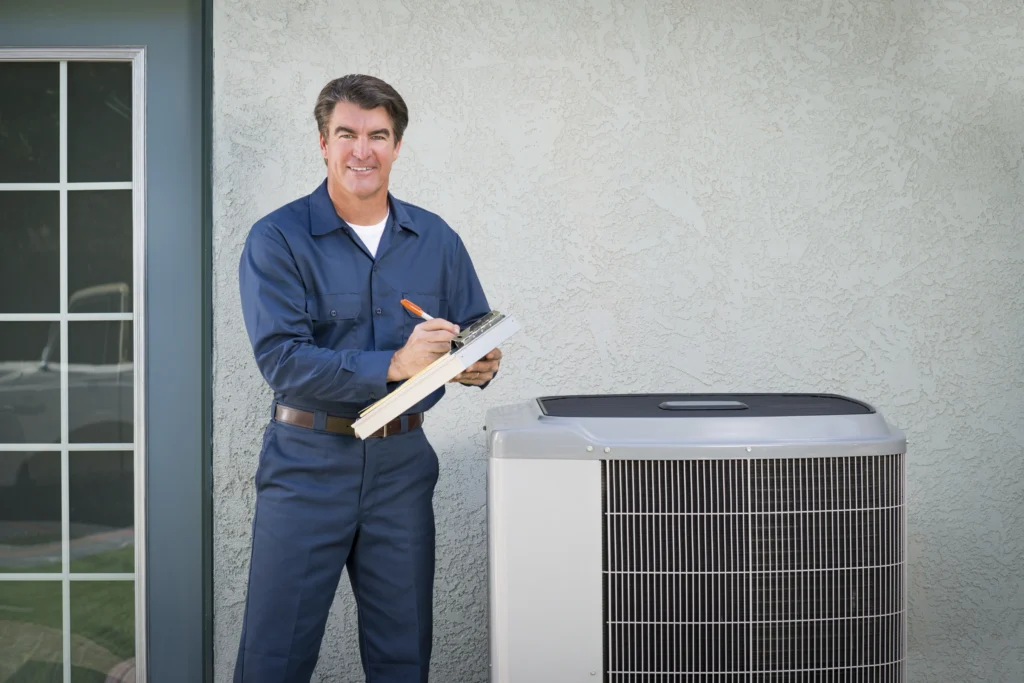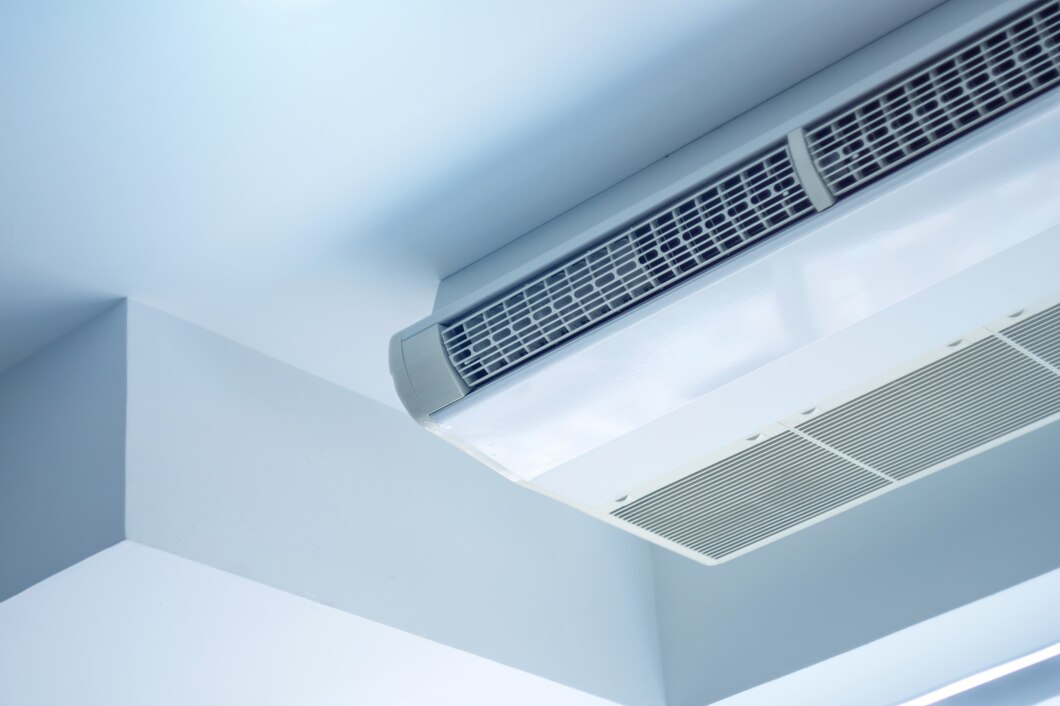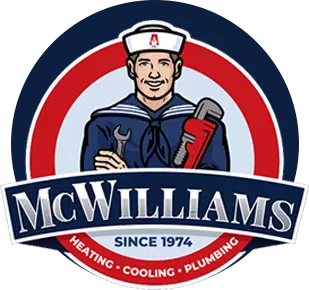Blog
Introduction
 When icy coils threaten to leave you hot and uncomfortable, these comprehensive troubleshooting tips by the experts at McWilliams Heating, Cooling, & Plumbing are here to save the day. Conquer frozen evaporator coils and restore comfort to your living spaces with these detailed steps:
When icy coils threaten to leave you hot and uncomfortable, these comprehensive troubleshooting tips by the experts at McWilliams Heating, Cooling, & Plumbing are here to save the day. Conquer frozen evaporator coils and restore comfort to your living spaces with these detailed steps:
Stay Cool: 5 Tips for Troubleshooting Frozen Evaporator Coils. Staying frosty can be hard to do if your A/C conditioner’s evaporator coils are doing the same. Frozen coils can stop your air conditioning system dead in its tracks, preventing it from delivering the cool, conditioned air you expect from your system. The following offers a few crucial tips for troubleshooting frozen evaporator coils.
Understand The Potential Causes Of The Freeze-Up
- Evaporator coils, integral to your A/C system, play a pivotal role in cooling.
- As they absorb heat from the air, moisture condenses into liquid, dripping onto the coil.
- However, excessive frost accumulation disrupts this process, hindering heat absorption and compromising efficiency.
- Another cause of freeze-up is clogged air filters, which restrict the airflow needed for proper cooling.
- Reduced airflow leads to lower refrigerant pressure, a prime condition for forming icy coils.
When the evaporator coil absorbs the latent heat found in the surrounding air, it also reduces the air’s ability to hold large quantities of moisture in vapor form. As the air cools, the vapor condenses into a liquid, which falls on the coil and later drips into a catch pan underneath the coil.
Since condensate regularly comes into contact with the evaporator coil, and the coil’s own external temperature hovers just above freezing, there’s always a possibility for frost to form on the coil’s surface. The problem starts when sheets of ice begin to accumulate on the coil. Over time, the coil will eventually be encased in ice, preventing the refrigerant within the coil from absorbing latent heat and causing the unit to lose its cooling effectiveness.
Airflow blockages can also lead to frozen evaporator coils. Without enough air flowing through the coils, the refrigerant pressure eventually drops and the coils begin to ice over.
Give The Frozen Evaporator Coils Time To Thaw
- When you spot frozen coils, the first thing to do is turn off your A/C system.
- Allowing the coils to thaw is crucial for preventing long-term damage.
- You can use a hair dryer on its lowest setting to expedite the process. The gentle heat helps accelerate thawing.
- Exercise caution while using the hair dryer to prevent overheating and potential coil damage.
- In cases of milder frost buildup, switch to “fan only” mode to melt the frost with the help of the blower fan’s airflow.
For your first step, turn the air conditioning system off and give the frozen evaporator coils a chance to thaw out. You can do this by shutting the unit off at the circuit breaker. Left to its own devices, it could take up to 24 hours for the coils to thaw completely.
You can speed this process up somewhat with the help of a hair dryer, especially if you need your AC unit up and running as soon as possible. Be careful not to overheat any portion of the evaporator coil or the lines running to and from it.
For cases of moderate frost, you can leave your HVAC unit on and set it to “fan only.” This allows air from the blower fan to melt away the frost without shutting the unit down.
Check The Airflow
- Unrestricted airflow is the key to preventing coils from re-freezing.
- Clogged air filters are often the culprits behind restricted airflow.
- Replace them promptly to maintain proper cooling.
- Additionally, thoroughly cleaning the intake housing ensures optimal air movement.
- Regular maintenance of the evaporator coil is crucial. Keep an eye out for debris accumulation on its surface.
- Take care when cleaning the coil, as its delicate aluminum fins are easily damaged. Professional help may be the wisest choice for thorough cleaning.
The next step involves checking the AC system for adequate airflow. The air filters are most likely to be clogged with dust and debris, thus preventing air from flowing through unimpeded. Simply replace the air filter and vacuum the surrounding intake housing for good measure.
Make sure the evaporator coil itself is free of dust and debris. If you spot any debris or see algae and mitigate growing on the coil’s surface, don’t hesitate to clean the coils. Keep in mind that it’s easy to damage the aluminum fins lining the evaporator coil, so this may be a job better suited for your HVAC technician.
Inspect For Physical Damage
- The integrity of the evaporator coil is vital. Inspect it for any physical damage, such as bent fins or dented pipes.
- Physical damage disrupts the smooth flow of air and refrigerant, creating the right conditions for frost buildup.
- Address any identified damage before restarting your A/C system to prevent further complications.
- Don’t hesitate to call in a professional HVAC technician for repairs. They have the expertise to conduct a comprehensive inspection and perform necessary repairs.
Check the evaporator coil for any signs of physical damage. Bent coil fins, dented pipes, and damaged fittings could lead to icing problems. Any and all damage should be repaired by your HVAC technician before using your air conditioning system again.
Check Refrigerant Levels
- Low refrigerant levels are a prime trigger for freezing evaporator coils.
- Low pressure within the refrigerant lines causes the coil’s external temperature to drop, leading to frost buildup.
- Leaks within the A/C system at fittings, valves, or evaporator coil contribute to low refrigerant levels.
- Handling refrigerant-related issues is complex and requires specialized tools and knowledge. A professional HVAC technician is best equipped to safely diagnose, repair, and recharge refrigerants.
Low refrigerant levels can create a low-pressure environment within the refrigerant lines, making the evaporator coil’s external temperature fall below freezing. This, in turn, allows the condensation on the coil to frost over. Low refrigerant levels are normally caused by a leak somewhere within the A/C system, usually at a fitting, a faulty valve, or even a pinhole leak in the evaporator coil itself.
Your HVAC technician is best equipped to deal with your air conditioner’s refrigerant issues since measuring and recharging refrigerant is often a dangerous task that requires special tools and know-how.
Expert Help and Ongoing Maintenance
In the battle against frozen evaporator coils, knowledge is your greatest weapon. Understanding the causes of freezing coils and implementing these troubleshooting steps allows you to triumph over the heat. Remember, regular maintenance and professional assistance are your allies in the quest for long-term A/C performance. So, stay cool, stay informed, and enjoy a consistently comfortable indoor oasis throughout the sweltering summer months with McWilliams Heating, Cooling, & Plumbing.
If you want to learn more about dealing with frozen evaporator coils, check out the latest in AC service from the pros at McWilliams Heating, Cooling, & Plumbing. If you’re a homeowners in Lufkin, Nacogdoches, and surrounding areas can give us a call today to schedule an appointment.
Share This :
Emily
Table of Contents
Discover New Blog Posts
A well-functioning air conditioning (AC) system is essential for maintaining home comfort, especially during the warm months in places like Splendora. When your AC unit […]
The summer heat is right around the corner, and with it comes increased use of air conditioning systems in Shepherd. A well-maintained AC condenser unit […]
Air conditioning systems have become an essential part of modern living, providing much-needed comfort during the warm months. In Cleveland, where temperatures can rise significantly, […]






 7
7 
